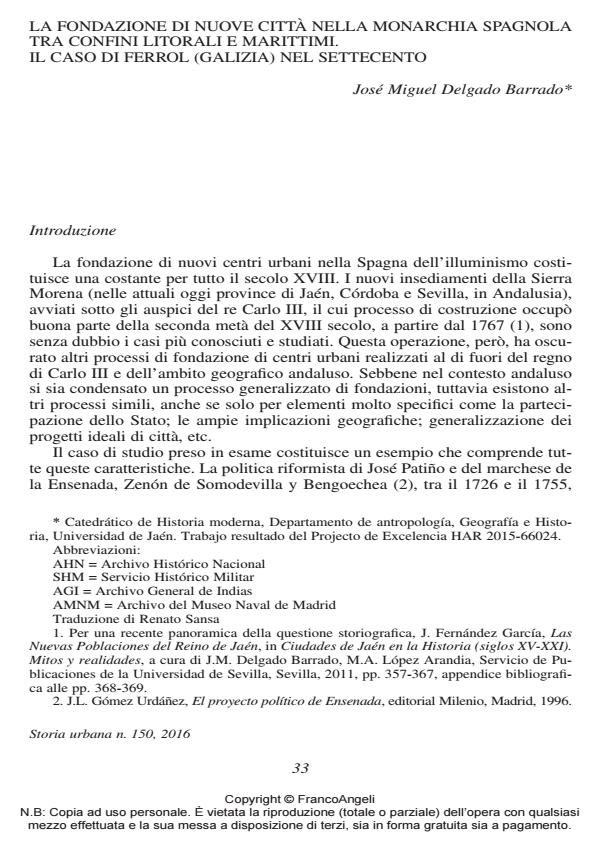New-town in the Spanish Monarchy on maritime borders. The case study of Ferrol in the 18th Century
Journal title STORIA URBANA
Author/s José Miguel Delgado Barrado
Publishing Year 2016 Issue 2016/150
Language Italian Pages 18 P. 33-50 File size 716 KB
DOI 10.3280/SU2016-150003
DOI is like a bar code for intellectual property: to have more infomation
click here
Below, you can see the article first page
If you want to buy this article in PDF format, you can do it, following the instructions to buy download credits

FrancoAngeli is member of Publishers International Linking Association, Inc (PILA), a not-for-profit association which run the CrossRef service enabling links to and from online scholarly content.
New-town in Spain during the Enlightenment are a constant throughout the 18th century. The best known cases are those of the Sierra Morena (in the current provinces of Jaén, Córdoba and Seville, Andalusia), started under the auspices of King Charles III. But there are other examples worthy of attention as the case of Ferrol in Galicia. The loss of Gibraltar at the beginning of the 18th century posed the question of redefining the naval policy through the reorganization of maritime departments. Ferrol, in Galicia, is the example of a new-town as administrative center of the new maritime department of the North. For this purpose, close to the old village of Ferrol, a new urban space was designed, developed, reshaped and built, according to urban planning theories of the time. The case study of Ferrol reveals a particular interest by the accumulation of elements that converge in the urban planning process; furthermore the topics there discussed and eventually adopted should be treated as an important variable in historical and comparative studies on new-town.
Keywords: History of Spain, Enlightenment, New-town Ferrol, Port cities
José Miguel Delgado Barrado, La fondazione di nuove città nella monarchia spagnola tra confini litorali e marittimi. Il caso di Ferrol (Galizia) nel Settecento in "STORIA URBANA " 150/2016, pp 33-50, DOI: 10.3280/SU2016-150003